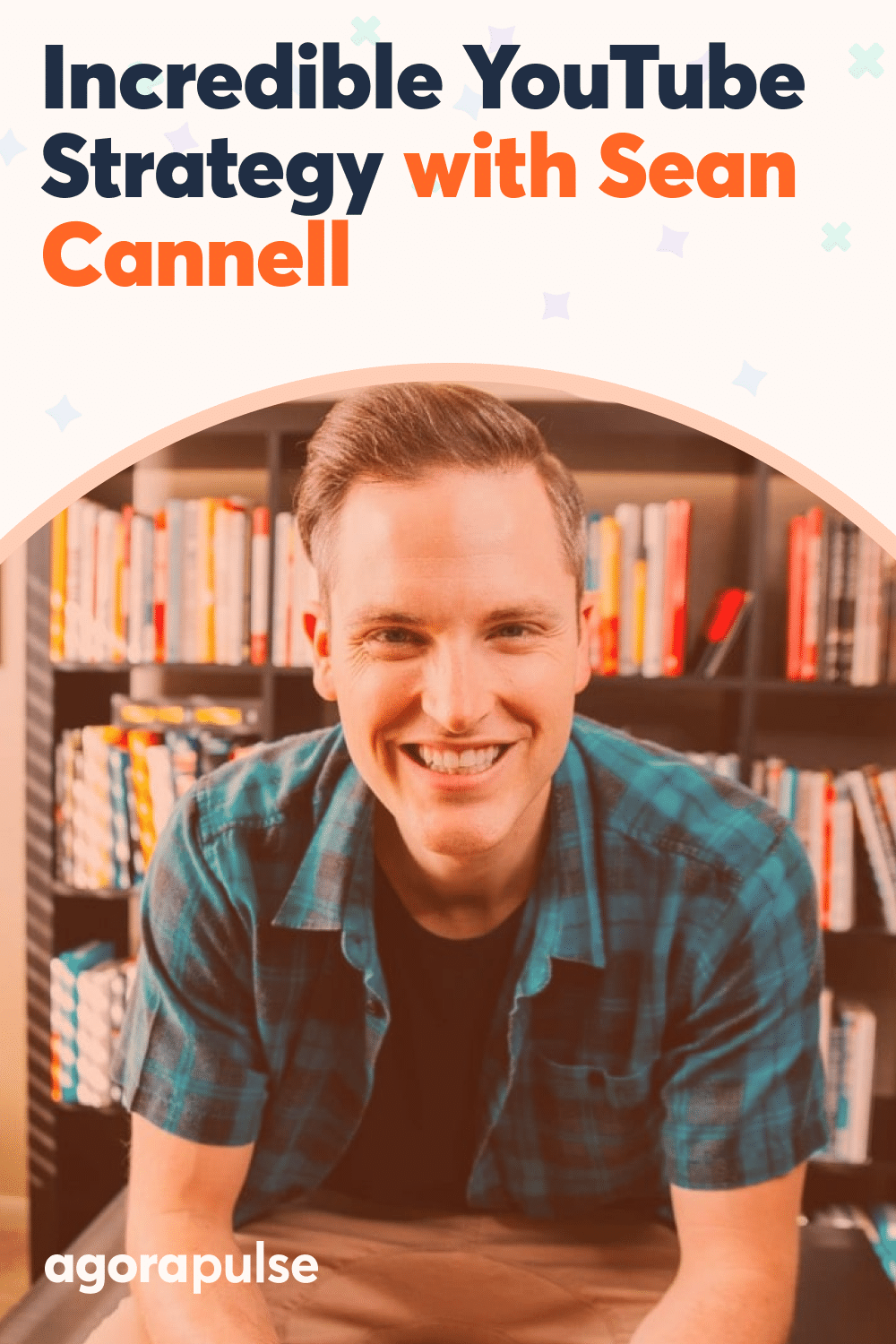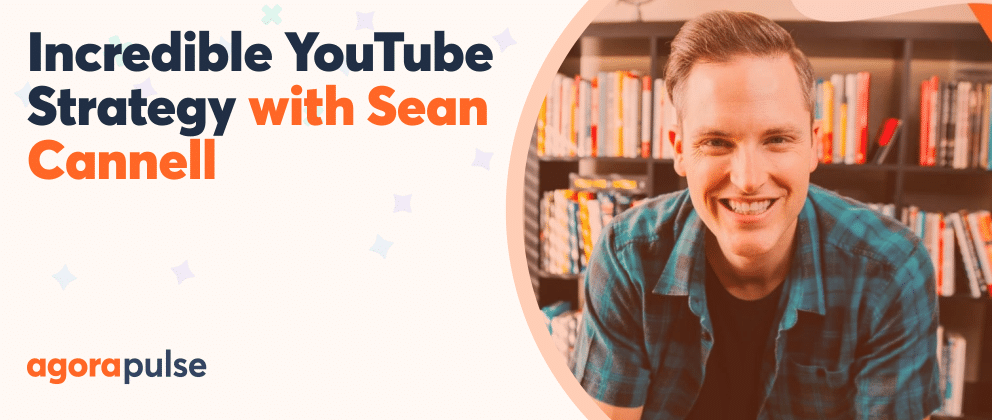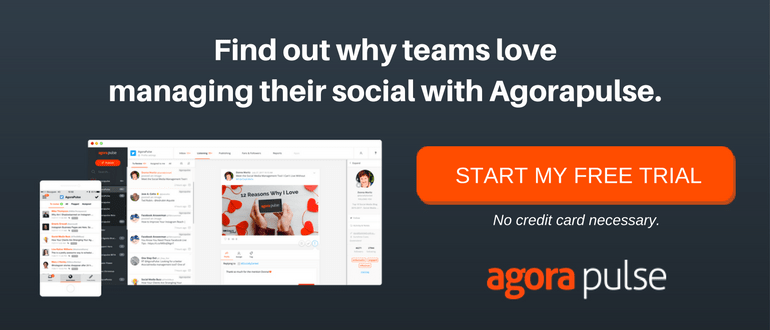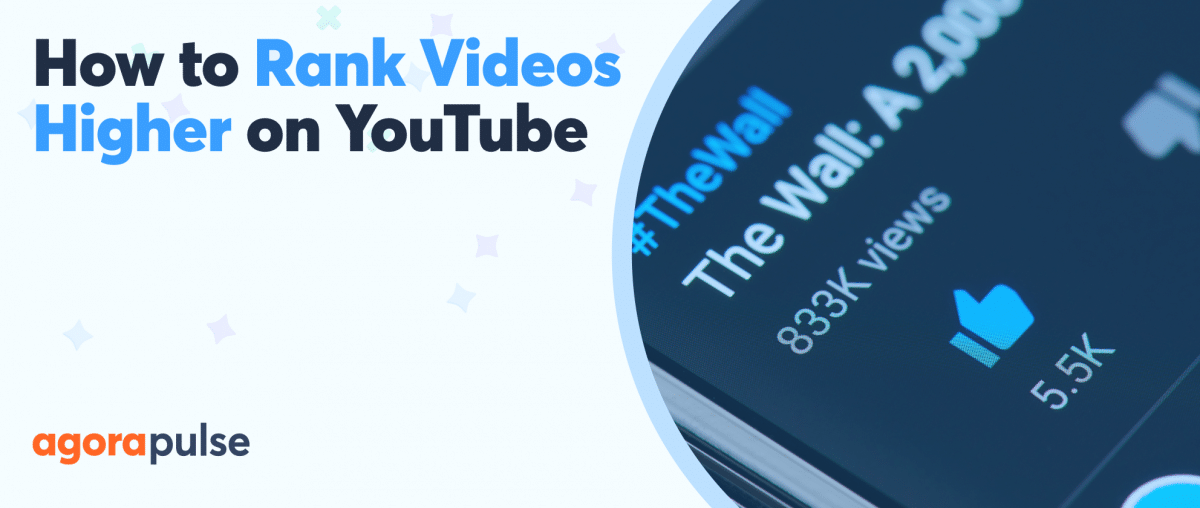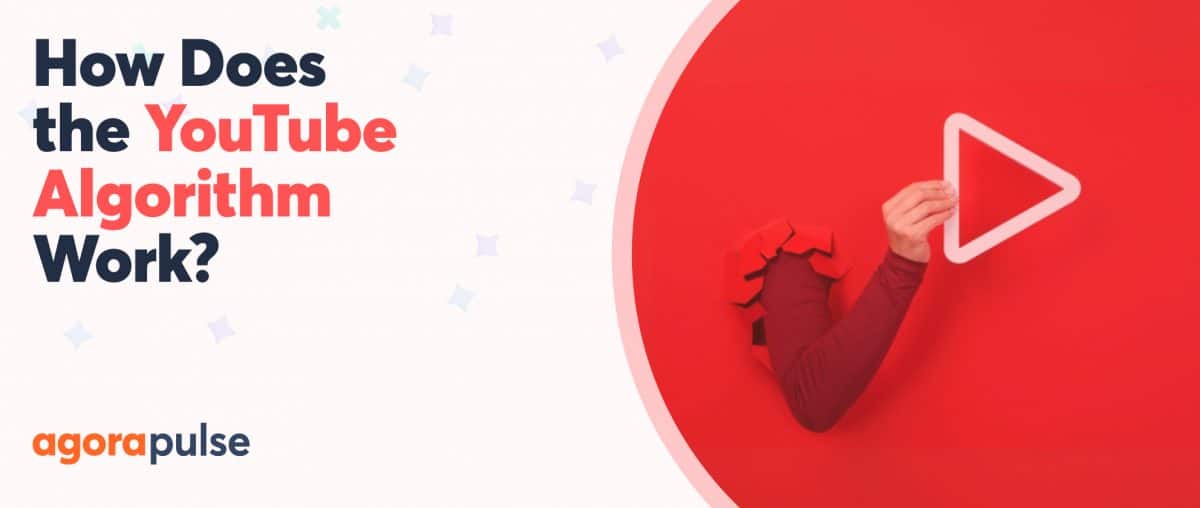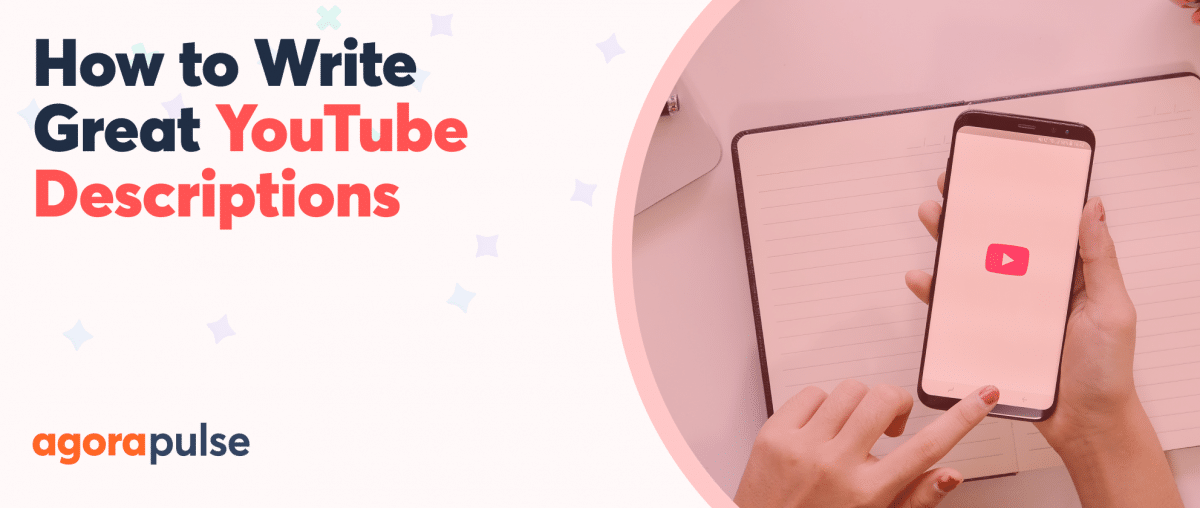Want your YouTube videos to stand out amid the myriad video content out there? World-famous YouTube expert Sean Cannell offers solid advice and tips for your video strategy.
There has been a lot of buzz surrounding YouTube lately.
So if you’re not using it to market your business and connect with your audience, you’re going to want to keep reading.
On this episode of Social Pulse Weekly, I was joined by the amazing Sean Cannell, a world-renowned YouTube expert. From all his channels, he’s amassed over 1.5 million subscribers. His videos have more than 43 million views.
We asked him to teach us how to build an incredible YouTube strategy for this year and beyond.
But before we jump into that, Sean has a really interesting story … So I wanted to start by asking him to share the journey that brought him to today. So here it is, in his own words.
From Church Volunteer to YouTube Guru
“In 2018, I launched a #1 best-selling book called “YouTube Secrets,” but my journey absolutely did not start there,” says Sean Cannell.
“I actually got into video way back in 2003. It all started when I was volunteering at my local church, and my youth pastor handed me a video camera and some software, and said, ‘Hey, start making videos for the youth group.’
“And those videos were terrible. But I kept doing them, and was just going through the motions, and getting tons of practice. In fact, that first year, I did 52 videos!
“At that point, the lead pastor felt like the videos weren’t actually too bad, so he asked me to do them on Sundays as well. So at that point, I was doing 104 videos per year. I was learning how to edit, how to be on camera, and I was able to really level up my skills.
“The first YouTube channel I managed was for that very church, in a small town just outside of Seattle, WA. It was 2007, and I still didn’t know how to do thumbnails, titles, etc. You also couldn’t upload YouTube videos longer than 15 minutes at that time, so we had to chop everything into 3-4 parts.
“And all of that experience led to where I am today.
“I started different businesses and had different challenges along the way. But it all eventually led to me really studying YouTube and becoming passionate about helping people build their influence, income, and impact.
“I’m excited about what’s happening with YouTube, but also with LinkedIn video, and Facebook and Instagram Live. Video is a powerful force that everybody needs to be maximizing.”
Q. What’s working for you these days in terms of your social media strategy?
Before Sean shared what’s working for him, he encouraged us to take a step back and look at the big picture, and that’s this:
Just like seasons change, what works (and doesn’t work) in business changes.
For instance, organic reach is not as good as it once was. In this way, it’s winter: It’s cold, and we’re just trying to hang in there. But the encouraging thing is that if things are bad right now, we just need to keep going–because it is going to get better.
The same holds true when we’re in the “summer” of business, when we’re crushing it and making lots of sales. At that point, it’s important not to get overly confident or cocky because there are going to ups and downs.
For Sean, it’s important not to judge himself based on his results:
“I like to judge my life not on my harvest–what I’m reaping–but by the seeds I’m sowing. Meaning, I don’t care if it’s a good season or a bad season … All I can do today is plant seasons for the harvest.”
Reading is one way Sean recommends “sowing these seeds.” It increases your knowledge, so you’re ready for the next big thing that comes along. It could also mean pouring energy and resources into your team and creating leaders. It could mean installing new systems and leveraging the power of awesome social media tools like Agorapulse or communication tools like Slack.
In terms of what specifically has been working for Sean and his team, there are three main things.
1. Identify consumer trends
Sean’s business earns around $250K profit each year just through the Amazon Associates program. They do this through tech gear reviews and helping people find cameras, smartphone accessories, lighting, and other audio/visual equipment.
A large part of this success comes from creating content to leverage Black Friday, Cyber Monday, and the different holiday seasons. It comes down to thinking about what the trends are going into the season and then creating content based on those trends.
2. Plan ahead
According to Sean, prior planning prevents poor performance.
He and his team sit down with everybody one on one to find out how their tasks are going, how they’re doing personally, and how Sean can support them. The team also helps them identify their goals for the coming year, so they’re ready for what’s ahead—well ahead of time.
This is where, according to Sean, Agorapulse is a lifesaver for marketers and business owners. It allows them to preschedule all their content and focus on what really matters.
3. Crush the first two weeks of January
Sean plans out his content for the new year ahead of time to reduce friction during that busy period. He knows they need to get their YouTube videos and content done by Dec. 15 … or else it’s too late.
Sean likens the first couple of weeks of the new year to a bear crawling out of hibernation. It takes a week or two to ramp things up, so you really have to have your promotions and content ready well before then.
He finds many of their competitors don’t think that way, so this gives them a real leg up on the competition.
Related: Your Content Recipe for YouTube Videos Your Audience Will Love
Q. If someone hasn’t done much with YouTube videos (or any videos) to this point, what are the first steps the person should take?
Sean’s first piece of advice is not to ponder—just post. You have to practice because your first videos are going to be your worst ones. So if you’re terrified to do a YouTube video or Facebook Live, just do it!
It’s like when you first go to the gym. You know that if you go, you can get big biceps by lifting weights. But when you’ve never been to the gym, it’s the worst feeling ever. You walk in super-awkward, and you feel like everyone’s staring at you. It’s awful and overwhelming!
But when you show up consistently, a couple of days each week for the next four weeks, then eight weeks, then twelve weeks … Well, now you’re rocking it. You’re fist-bumping Steve up at the front, and you’ve got your gym shark hat on.
And it’s the same with video.
You have to get into the flow of things. Just hit record and start posting videos.
Practically speaking, Sean recommends practicing with Stories. One of Sean’s team members used to be terrified of doing videos. She worried about how she sounded and didn’t like the way she looked. But she committed to doing a Snapchat every single day.
She wanted to create stories, with a beginning, middle, and end. But since Snapchats were 10 seconds long, she had to break up her stories into pieces. She’d start by grabbing her phone and being like, “Hey, it’s Heather here, and in this video, I’m going to share the two biggest mistakes people make when it comes to homeschooling.” Then her next video was tip number one, then tip number two.
She didn’t actually care if anyone watched it, as it wasn’t about building her influence on Snapchat: “It was about practicing in public … [I]t was way less about the results of the video she was shooting, and more about the process of personal development she was putting herself through to get her prepared for launching her first YouTube video.”
She continued doing this for six months. And when she launched her first YouTube video, it crushed. She followed Sean’s system, Video Ranking Academy, but had also been building up her video “muscles.” And people would be like, “Where did this Heather come from? She came out of nowhere!” But in reality, she didn’t come out of nowhere. She came out of six ugly months on Snapchat.
When Sean started his business in 2009, he started going to Toastmaster’s and Chamber of Commerce events to get practice standing in front of people and promoting his business. At first, he felt awkward and nervous, but those experiences were what gave him the confidence he has on camera today.
According to Sean, you have to expect imperfection. You may have one or two amazing videos, but more than likely you’ll rewatch your videos and think, “I should have done that differently.”
Be yourself, and just have fun with YouTube videos. Because if you wait for perfection, you’re never going to do it.

Q. Many people get overwhelmed trying to do video for every social channel. Should we focus on just one platform, or should we put up videos and content everywhere?
Sean believes this may be the No. 1 struggle marketers and entrepreneurs are facing right now. There are so many shiny objects, so much opportunity, and so many voices to listen to.
And even Sean lays in bed anxiously thinking of all the opportunities he should be taking advantage of … like LinkedIn Live, IGTV being distributed in feeds, Facebook Lives, etc. Not to mention the 150 YouTube videos he wants to make!
And it’s true, these are all great opportunities. But Sean thinks Richard Branson says it best: “Business opportunities are like buses. There’s always another one coming.”
Sean believes we need to accept the fact that we aren’t called to lead our businesses by opportunity: “You’re called to lead your business by purpose. And so we like to call people in our community purpose-driven entrepreneurs, which means that you actually start with the end in mind. You know where you’re going, who you’re called to reach, and who you want to impact.”
Be realistic about the resources you have: your time, mental and emotional strength, and your human resources.
What Sean recommends is putting a quality score on whatever you’re putting out right now. If your video quality is an 8, 9, or 10, don’t post more than one video per week. And if the quality drops below a 7, don’t start putting out 4s or 5s just so you can have more volume.
Do less, better.
Sean compares this whole process to chasing rabbits. Imagine you see seven rabbits, and all of those rabbits are amazing. So you chase all of them … and catch none. But if you chase one, you’ll catch it. Then you can tame it, train it, build its confidence and get that rabbit working for you.
And then that rabbit can help you catch the next one.
Sean and his team are currently putting out up to 100 pieces of content each day. But, he started with one “rabbit”—and that rabbit was YouTube.
According to Sean, when it comes down to it, this is the power of focusing on one thing: “I think most of us should probably say, ‘What is the main thing that I should be working on right now?’, and [then] actually shut down some of the other things to get the main thing producing even more.”
Creating original, valuable content is hard. But if you think about it, creating one pillar piece of content each week means 52 remarkable pieces in a year. And this really adds value to the marketplace and helps you build your business.
Related: The Biggest YouTube Marketing Mistakes That Too Many Brands Are Making
Q. What do you and your team do when you hit a roadblock of creativity?
Chase Jarvis just wrote a new book on creativity that’s worth reading. Going back to the “working out” analogy, he likens creativity to a muscle. The more you use it, the more it grows.
So, if you’re struggling to come up with creative ideas for social, start by looking at some practical things you can do regularly, like answering questions your community is asking.
Another strategy is to doing some simple keyword research. How are people phrasing their problems? Sean recommends using vidIQ to do keyword research on YouTube. And, of course, you can use Google Keyword Planner or Google Autofill to see what people are searching for.
What Sean has found is that once you start creating content, an almost endless stream of idea tends to come to you (often because of all the comments and questions you receive from their audience).
And on this note, Sean recommends surveying your audience. Send it to your email list, and ask questions like:
- “How can we serve you?”
- “How can we help you?”
- “What’s the No. 1 thing you’re you struggling with right now?”
In fact, Sean recommends one way to use this strategy right now: Go to Twitter or Facebook and actually type in those questions. Sean and his team constantly ask these questions so they can be as responsive as possible to the needs of their community.
Another strategy Sean recommends is simply getting out of your usual environment. When you’re just sitting in front of your computer all day, you’re less likely to get great ideas.
According to Sean, “Tired eyes rarely see a bright future.” He suggests taking a nap or a break when you struggle with creativity. The world isn’t going to end just because you went for a walk or took a nap!
In fact, Sean’s team is loving walking-meetings right now: It gets their blood flowing and helps them really process their thoughts. Sean works from home and has even been walking a loop in his neighborhood 2-4 times each day. Sometimes, he even skateboards it!
He also recommends changing your environment dramatically, if possible. For instance, go to an event like a conference where you can meet new people and see new trends. And keep in mind there’s a ton you can learn from adjacent industries as well. If all you’re doing is following other people in your own industry, you probably aren’t going to get the most creative insights.
Finally, journaling can be great for capturing and remembering ideas. For instance, if you have a great idea when you’re lying in bed at night, open your phone and throw it in the notes app. This way you have an endless supply of ideas for YouTube videos (and more) when you need it.
Q. What do you see as the biggest blind spot entrepreneurs have these days?
According to Sean, one of the biggest blind spots or misconceptions is that we always have to be creating something new.
Entrepreneurs are always trying to say new things to new people when in reality, we should be saying the same thing to new people. We put so much creative pressure on ourselves when we should be asking, “How do I say the same things but reach new people on a new platform?”
It’s about taking the same foundational information and refreshing it.
For instance, maybe you taught something amazing on your blog a year ago. Reteach those five points, and maybe add a bonus point because you’ve had a new insight. It will only take you a few minutes to refresh your content, so look at your old stuff and think about how you can breathe some new life into it.
When your content starts to get stale, that’s when you start to lose and decline. So instead, repackage, refresh and rebuild on the work you’ve already done.
Q. What’s the must-have video gear you currently recommend, and why?
If you’re just starting out, Sean recommends you start by accessorizing your smartphone.
Some product ideas include:
- A clip-on ring light you can get on Amazon
A Lavalier microphone that you can clip on to your shirt
A plug-in mic that can go into your lightning port
A tripod phone mount
Think “AVL”: Audio, video, lighting. Memorize that and think about it. Even if all you have is your phone, you can use this.
For instance, if you’re in a dark conference room, walk by the window where you’re going to have more light. This is the “L.”
Almost all smartphones have HD 4K video now, so this is the “V.” And since holding the phone can be a bit shaky, think about how you can stabilize it using a little mount or tripod.
And then audio is really, really important. People will tolerate low-video-quality, but low audio-quality will cause them to bounce. So if you can invest in a microphone you can plug into your phone or use wirelessly, do it.
If you’re going to invest in a camera, the Canon M50 is one of the best all-around cameras. Canon’s website has crazy deals on refurbished cameras, when they’re in stock. You could get the black or white model for $440 down from $600, with a one-year warranty. You can also sometimes get them open box and save some money that way.
The Osmo Pocket is also an interesting camera because it’s so small, as is the new GoPro. It’s a little shotgun with a light and flip-up screen. It’s also more stabilized, so it’s an interesting one to check out.
And if you want a premium edge to your YouTube videos? According to Sean, Sony is taking a lot of this market right now. They use a Sony 37 for shooting 4K videos that are really crisp.
But most people won’t need high-end equipment. And in fact, Sean thinks having really polished content could even be counterproductive:
“People are resonating so much with authenticity and relatability, that sometimes overproducing your content can actually put up a wall and not create a bridge.”
Q. Can you give us some tips that have really improved your YouTube videos’ views and engagement?
It might sound simple, but Sean’s biggest tip is this: Never upload a video that your audience didn’t subscribe for. For example, if they didn’t subscribe to watch product demos, testimonials, or tutorials, don’t upload those as YouTube videos.
Think of your audience first, and come up with something that your audience would find truly valuable. The way your YouTube videos are going to spread is because it resonates with a focused group of people who continually show up for the same type of content that you promised.
Another tip is to master the fundamentals. Understand how YouTube works, master thumbnails and titles, and think about SEO for your descriptions and tags.
Think about hot topics in your niche. People are interested in learning about them, so you need to be talking about them. Watch some YouTube videos, read some industry blogs, and catch up on what’s happening in your niche. Talk about the right topic at the right time. That’s where the magic is!
Personally, I would add make sure you’re doing something you’re passionate about. If you don’t have a passion for the subject, there’s no drive. And when you’re passionate about something, you draw people in … which is really what we all want!
Q. Should people focus on video podcasting or regular podcasting, and why?
One of the big trends people should be paying attention to is starting a show. Sean has been looking at top YouTubers like Philip DeFranco, PewDiePie, Marie Forleo, and Gary Vaynerchuck, all of whom have their own shows.
There’s something powerful about starting a branded show, not unlike Social Pulse Weekly. It’s a weekly show that people love and where they come to hang out.
So, having a signature show is one big theme, and video podcasting is the other. So you should absolutely shoot video when you do a podcast because it becomes like a triple threat of content.
Omar on the Think Media team has been producing a video podcast for a local business called LivBay Lash (formerly Sassy Lashes). The owners started the company out of their house just three years ago and, at the time, were broke. They actually sold the refrigerator on their rental property just to make rent!
Fast forward to now, and their business is doing eight figures. They have a couple of physical locations and do coaching and workshops for other lash artists. And they’re eight weeks into their signature show.
Watch the Video
Here’s the entire episode of Social Pulse Weekly with special guest Sean Cannell with additional tips for YouTube videos and video strategies.
Tune In to Social Pulse Weekly
Social Pulse Weekly brings you incredible marketing experts and today’s latest social media news and developments. Tune in every Friday at 2PM ET to keep your finger on the pulse of social media.
Sign up now for a FREE demo.
